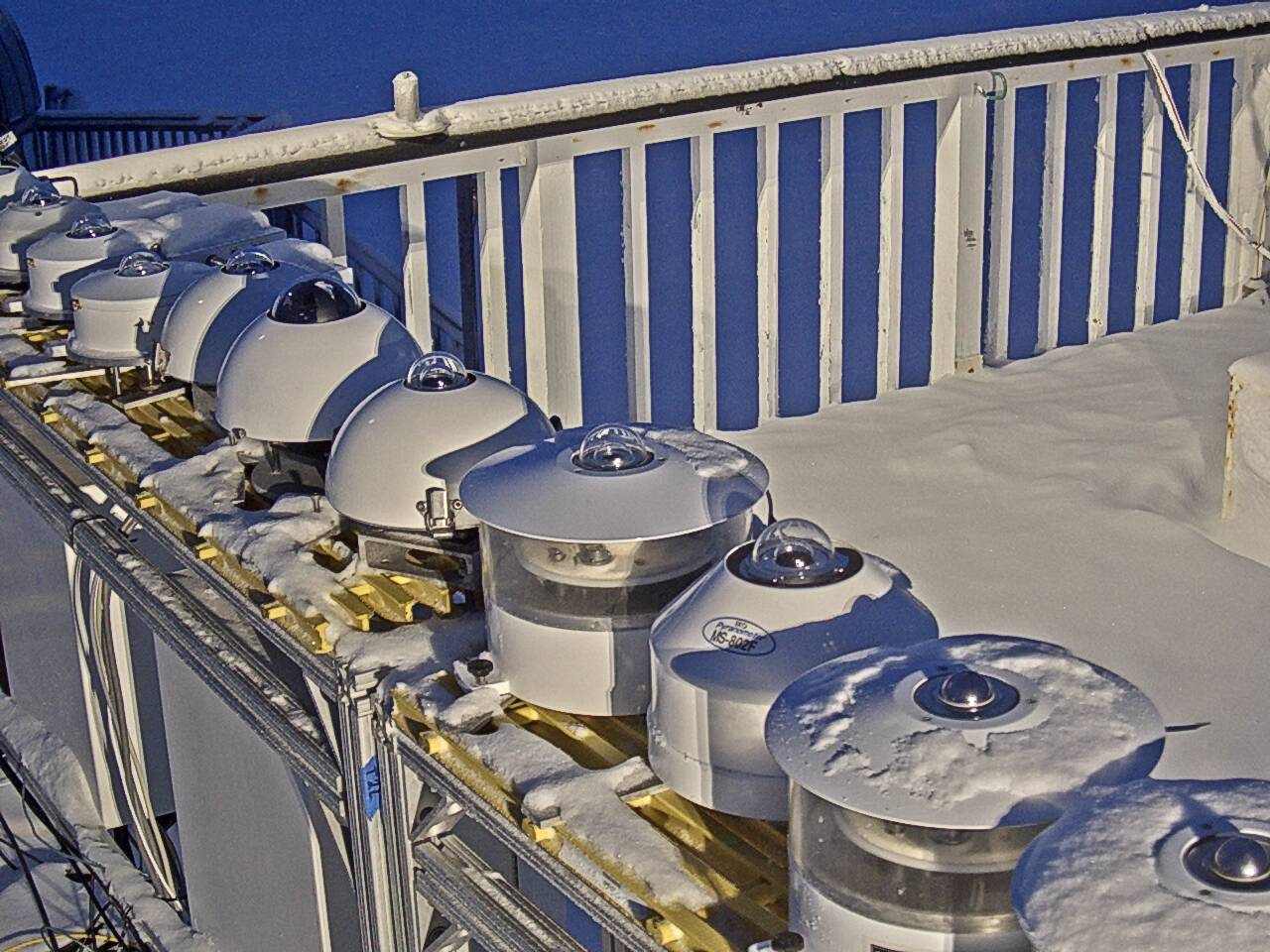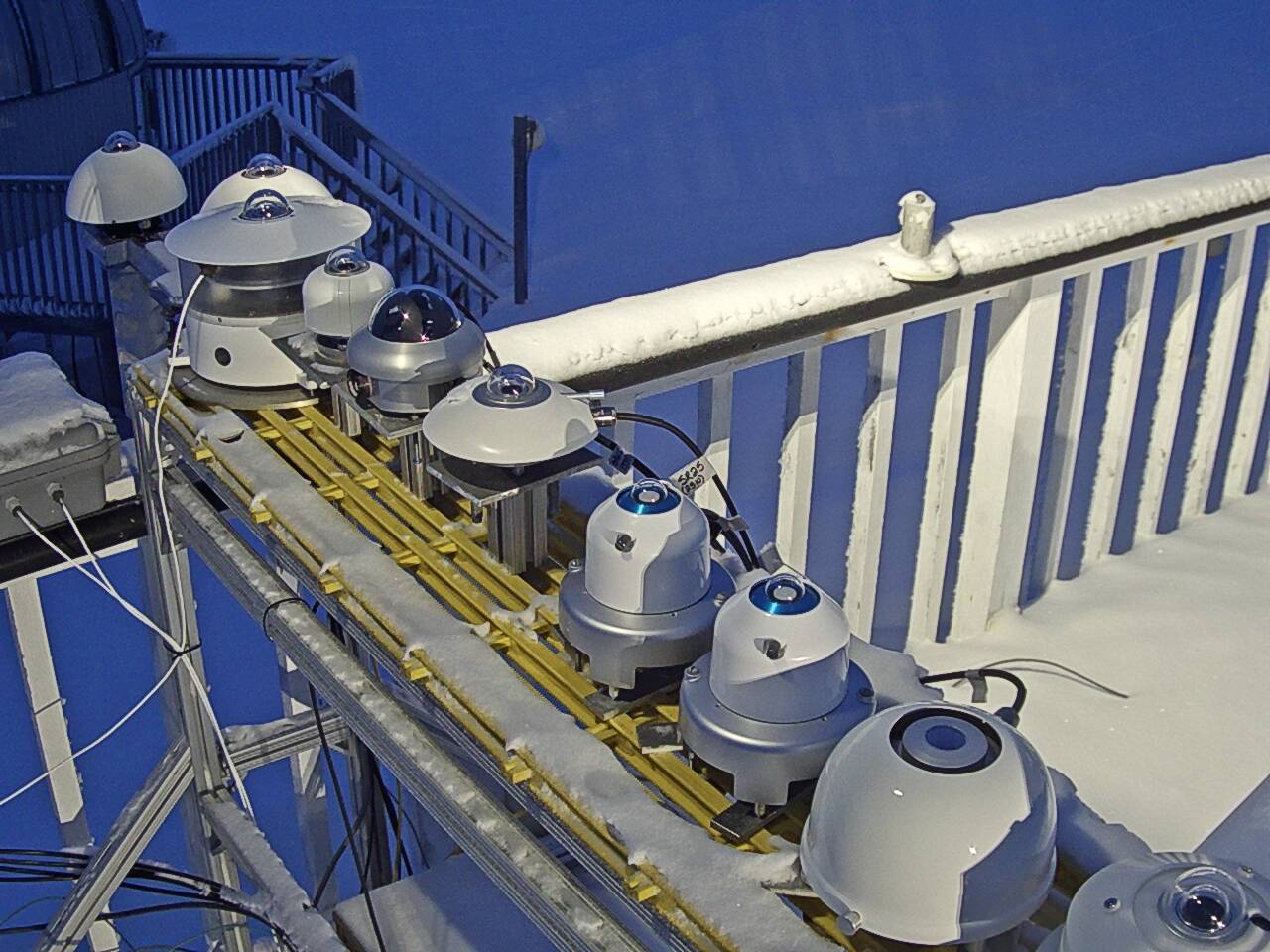
About this Project
August 2017—August 2018 | Utqiaġvik, Alaska

Measurements of longwave (terrestrial) and shortwave (solar) radiation are fundamental environmental quantities and are regularly observed around the world using broadband radiometers. Because of the sensitivity of these instruments to internal temperature instabilities, there are limitations to using heat as a method for preventing the build-up of ice on the sensor windows. Consequently, substantial amounts of data are lost in regions conducive to frost, rime and snow, such as the polar regions.
The purpose of the D-ICE campaign is to test strategies developed by research institutes and industry for preventing radiometer icing. Specifically, we aim to identify a method to be adopted by the research community that is effective at mitigating ice while also minimizing adverse effects on measurement quality, and to serve the needs of the community best, while also being energy efficient. Following the experience of the contributing institutes, the guiding hypothesis is that ventilation of ambient air alone, if properly applied, is sufficient to maintain ice-free radiometers without increasing measurement uncertainty during icing conditions. Other methods, including applying heat to the housing and/or circulating heated air across the dome as well as manual cleanings by on-site technicians will also be evaluated. The project is being led by the NOAA Physical Sciences Laboratory and the Baseline Surface Radiation Network Cold Climates Issues Working Group. The project will be carried out at the NOAA Global Monitoring Division Atmospheric Baseline Observatory in Utqiaġvik (formerly Barrow), Alaska, from August 2017 through summer 2018.
Project Leads

Phone: 303-497-4453

Phone: 303-497-4518
Science Objectives
D-ICE is designed to test proposed solutions together in an extreme environment, not necessarily to solve the icing problem.
Guiding Hypothesis
Ventilation of ambient air alone, if properly applied, is sufficient to maintain ice-free radiometers without increasing measurement uncertainty during icing conditions.
- Quantify the impact of icing on mean longwave and shortwave fluxes for a full annual cycle in the Arctic:
- Ice-mitigation compared to three controls:
- Standard operation of collocated BSRN station
- Standard operation of nearby ARM station (< 1km, will also have a camera)
- Eppley PSP and PIR in standard VEN DC ventilation, not cleaned manually
- Ice-mitigation compared to three controls:
- Evaluate the effectiveness of the de-icing systems in mitigating ice:
- 15-minute resolution visual inspection (~35K x 3 images)
- Continuous monitoring of ice presence from Rosemount ice probe (TBD):
- Plausible mass/accretion rates to quantify the limit for de-icing designs
- Evaluate the influence of the designs on instrument uncertainty
- Analyze IR-loss offsets given heated and unheated ventilation
Other Outcomes
- Concluding that the icing problem is solved, or not
- Opportunity to observe performance of EKO, Hukseflux, Delta-T, and digital sensors
- New possibility for UAV (e.g. weight), autonomous (e.g. DIF/GLOBAL w/our tracker), serial logging
- If (2) and (3) prove promising, identification of a preferred method to be adopted by BSRN for de-icing and associated estimate of power consumption
- Possibly additional characterization of radiometric uncertainty at low temperatures
Origins
- The Cold Climate Issues Working Group (CCIWG) of the Baseline Surface Radiation Network (BSRN) recognized three points from workshops that took place in 2012, 2014 and 2016:
- Progress is being made on de-icing strategies independently by a number of stakeholders
- These independent lines of inquiry were focused mainly on heating/ventilation
- BSRN experience is consistent with the hypothesis that ventilation is a viable option
- DOE-ARM North Slope of Alaska Radiometer Campaign
- BSRN station reports from Neumayer (AWI, Antarctica), Ny-Ålesond (AWI, Svalbard), Sonnblick (ZAMG, Austrian Alps), Junfaujoch (MeteoSwiss, Swiss Alps)
- In 2016, C. Cox took over as Chair of the CCIWG. PSD was already working on the icing problem, beginning with R. Albee at Storm Peak Laboratory (2014-2015) and continued by S. Morris (2016)
- It was decided that PSD would lead a "bake-off" to evaluate already-developed technologies in the Arctic.
Experiment

Data Browser
Webcam Images
 |





























